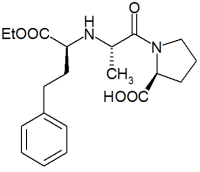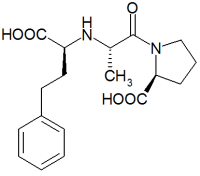Albuminuria in persons with diabetes mellitus is a risk factor for the development of nephropathy and for cardiovascular morbidity. Angiotensin converting enzyme (ACE) inhibitors have been shown in previous studies to attenuate progression of nephropathy in both types of diabetes in hypertensive and normotensive patients with microalbuminuria. ACE inhibitors also lower urinary albumin excretion in normotensive and normoal-buminuric patients with type 1 diabetes, although the relationship between albuminuria and later nephropathy in these patients has not been established. Ravid and associates evaluated the effects of early introduction of the ACE inhibitor enalapril in the management of normotensive, normoalbuminuric patients with type 2 diabetes.
The randomized, double-blind, placebo-controlled study included 156 patients younger than 60 years of age who were diagnosed with type 2 diabetes when they were 40 years of age or older. All of the patients had a baseline mean blood pressure of less than 107 mm Hg and albuminuria (albumin excretion: 30 mg per 24 hours or less [30 mg per day]). Patients were randomly assigned to receive either 10 mg of enalapril daily or a placebo and remained in the study for six years.
At semiannual visits, hemoglobin [A.sib.1c], serum creatinine, serum electrolyte and urinary creatinine levels, and 24-hour albumin excretion were measured. Blood pressure was also monitored; if the systolic pressure dropped below 100 mm Hg, the enalapril dosage was reduced by one half. Evidence of retinopathy was evaluated by an ophthalmologist.
Transition to microalbuminuria after six years differed significantly in the treatment and placebo groups. Microalbuminuria was found in five (6.5 percent) of the 77 patients in the enalapril group compared with 15 (19.0 percent) of the 79 patients in the placebo group. The absolute risk reduction with enalapril was 12.5 percent. The placebo group also had a greater decrease in creatinine clearance by the fifth and sixth years.
Annual funduscopic examinations revealed 15 new cases of retinopathy in the placebo group (19 percent) and six new cases in the enalapril group (7.8 percent). Enalapril was associated with an absolute risk reduction of 11.2 percentage points for the development of retinopathy during the course of six years.
The mean blood pressure of the enalapril group was significantly lower than the placebo group only during the fifth year of the study.
The authors conclude that enalapril appears to offer a modest renal protective effect in normotensive, normoalbuminuric patients with type 2 diabetes. The population in this study was at low risk for development of diabetic nephropathy, making the recommendation of universal use of ACE inhibitors in all normotensive, normoalbuminuric patients with well-controlled diabetes inappropriate at this time. Further studies are needed to identify which low-risk patients are likely to benefit from such therapy and to establish if the onset of overt diabetic nephropathy will be delayed with such therapy.
RICHARD SADOVSKY, M.D.
Ravid M, et al. Use of enalapril to attenuate decline in renal function in normotensive, normoalbuminuric patients with type 2 diabetes mellitus. A randomized, controlled trial Ann Intern Med June 15, 1998;128:982-8.
COPYRIGHT 1998 American Academy of Family Physicians
COPYRIGHT 2000 Gale Group




